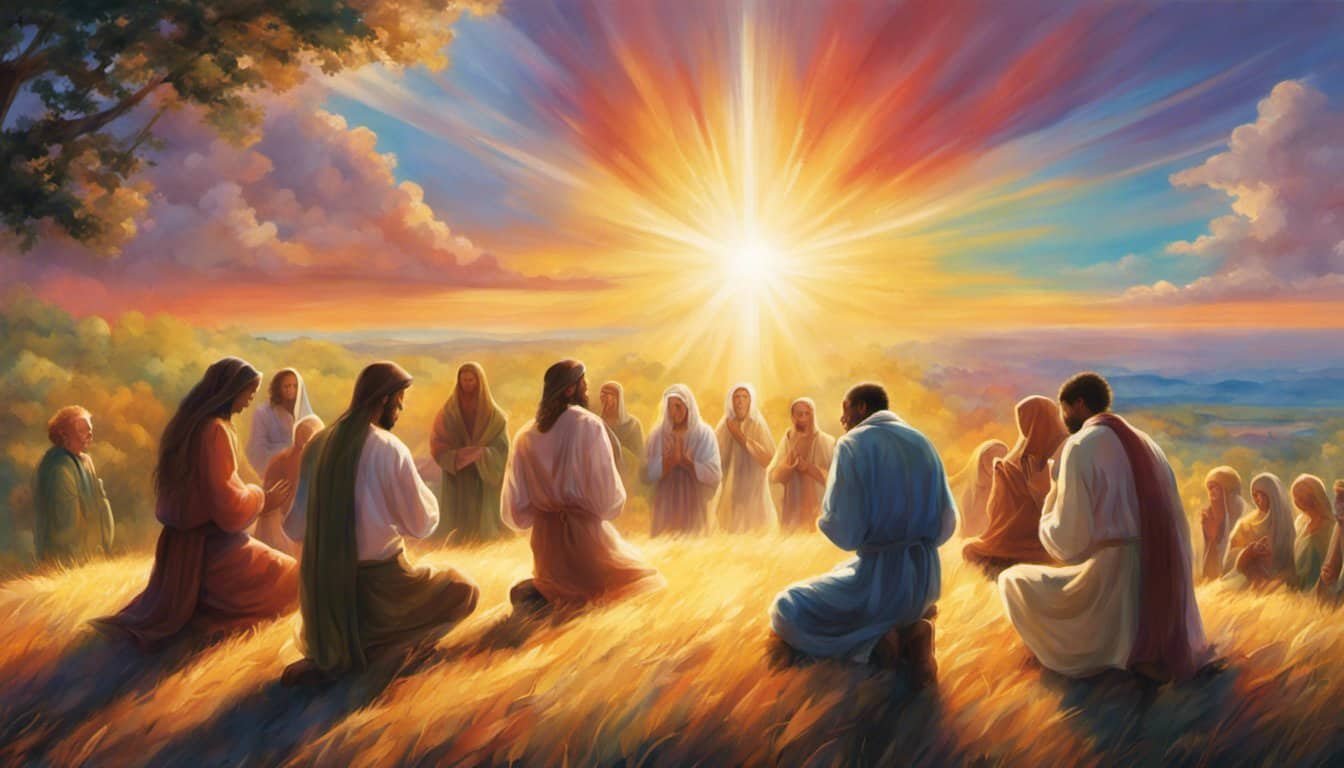Ever wondered why the Old Testament feels like a heftier read compared to the New Testament? You’re not alone. Many people notice the difference in length between these two sections of the Bible and wonder what it means for their reading and understanding.
Dive into the fascinating world of biblical texts and discover how the Old Testament, with its rich tapestry of history, law, and prophecy, stacks up against the New Testament’s focused narrative of Jesus’ life and teachings. Whether you’re a curious reader or a devoted scholar, exploring these differences can deepen your appreciation for the Bible’s structure and content.
Overview of the Old Testament and New Testament
Key Themes and Content in the Old Testament

The Old Testament is foundational for understanding the Bible. It’s full of stories, laws, prophecies, and poetry that describe the history of the Jewish people and God’s relationship with them. Key themes include creation, the fall of humanity, the establishment of Israel, the law given to Moses, and the promise of a future Messiah. Books like Genesis, Exodus, Psalms, and Isaiah are some of the highlights.
Key Themes and Content in the New Testament
The New Testament centers on the life, teachings, death, and resurrection of Jesus Christ. It starts with the four Gospels—Matthew, Mark, Luke, and John—which tell the story of Jesus’ life and ministry. Key themes include salvation, love, forgiveness, and the establishment of the Christian church. Books like Acts, Romans, and Revelation provide further teachings and visions for the future.
Analyzing the Length of the Old Testament Vs. New Testament
Number of Books in Each Testament

The Old Testament has 39 books, while the New Testament has 27. You can see the difference in sacred writings aimed at Jewish history vs. early Christian teachings.
Word Count Comparison
The Old Testament contains around 622,700 words. The New Testament has approximately 184,600 words. This significant variance shows the extensive history and laws in the Old Testament compared to the more concise teachings of the New Testament.
Chapter and Verse Differences
The Old Testament features 929 chapters, whereas the New Testament has 260 chapters. When counting verses, the Old Testament has about 23,145, and the New Testament around 7,957. These figures reflect how the Old Testament’s detailed narratives and laws compare with the New Testament’s focused message.
Historical Context Influencing Length
Different historical and cultural contexts influenced the length of the Old and New Testaments. These contexts shaped the number of books, chapters, and verses unique to each testament.
Historical and Cultural Influences on the Old Testament
The Old Testament developed over centuries, reflecting Jewish history, law, and tradition. It contains detailed historical accounts and extensive laws.
Jewish scribes meticulously preserved texts, adding to their length. Prophets also contributed to its extensive nature with their writings.
Historical and Cultural Influences on the New Testament
The New Testament arose in a shorter period, focusing on Jesus’ life and early Christian teachings. Early Christians wrote with urgency to spread their message.
The Roman Empire influenced its concise style, favoring letters and shorter accounts. Evangelism’s priority led to succinct, impactful writings.
Impact of Testament Length on Religious Practices
Old and New Testament lengths affect various religious practices. They shape how teachings are learned and shared.
Influence on Liturgy and Public Readings
The length of the Old Testament means it offers many stories for public readings. Its detailed laws and histories provide rich material for liturgical cycles. The New Testament, being shorter, focuses on Jesus’ teachings and early Christian life. It aligns well with the structured readings of the liturgical calendar.
Educational and Devotional Impacts

The extensive content of the Old Testament allows a deep dive into Jewish history and laws. This builds a strong foundation for understanding the roots of Christian beliefs. The New Testament’s concise nature makes it easier for daily devotionals and study groups. Its focus on Christ and salvation is central to Christian teachings.
Conclusion
Understanding the length and content differences between the Old and New Testaments can deepen your appreciation of both. The Old Testament’s expansive history and laws provide a rich backdrop for the New Testament’s focused teachings on early Christianity. These differences not only shape religious practices but also influence how teachings are shared and understood.
Whether you’re exploring the detailed narratives of the Old Testament or the concise messages of the New Testament, each offers unique insights and spiritual guidance. Embrace the diverse material each testament provides and let it enrich your faith journey.
Frequently Asked Questions
What are the key themes of the Old Testament?
The Old Testament focuses on themes like creation, covenant, law, prophecy, and God’s relationship with humanity, particularly the Israelites.
What are the key themes of the New Testament?
The New Testament centers on the life, teachings, death, and resurrection of Jesus Christ, as well as the establishment and growth of the Christian Church.
How does the length of the Old Testament compare to the New Testament?
The Old Testament is significantly longer than the New Testament, comprising many books that detail extensive history, laws, and prophecies.
Why does the length of the Old Testament matter for religious practices?
« What is a Good Old Testament Scripture for a Funeral? Discover Comforting Verses Now
New Testament Scripture for Funeral: Find Comfort and Hope in These Powerful Verses »
The length and complexity of the Old Testament provide rich material for liturgical cycles, educational purposes, and in-depth study of Jewish history and law.
Why is the New Testament shorter yet significant?
The New Testament, though shorter, offers concise teachings and narratives essential for understanding early Christian beliefs and the life of Jesus Christ.
How does the New Testament impact liturgical practices?
The New Testament impacts liturgical practices by providing a structured focus on Jesus’ life and teachings, which are integral to Christian worship and public readings.
















